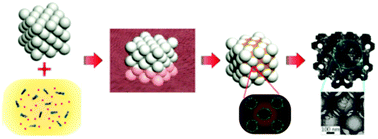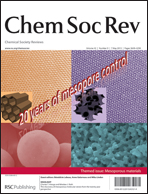Controlling macro- and mesostructures with hierarchical porosity through combined hard and soft templating†‡§
Abstract
Rigid, porous objects and surfactants serve as powerful templates for the formation of mesoporous and macroporous materials. When both types of template are combined in a single synthesis, materials with intricate architectures and hierarchical porosity can be obtained. In this tutorial review, we explain how to conduct syntheses with both soft and hard templates; moreover, we describe methods to control the final structure present in the templated material. Much of the foundation for multiple templating lies in the study of materials made with only one type of template. To establish a foundation in this area, a description of hard and soft templating is given, delving into the templates available and the steps required for effective templating. This leads into an extended discussion about materials templated with both hard and soft templates. Through the use of recent examples in the literature, we aim to show the diversity of structures possible through multiple templating and the advantages these structures can provide for a wide range of applications. An emphasis is placed on how various factors—such as the type of template, type of precursor, heat-treatment temperature, confinement within a small space, and template–template interactions—impact morphology.

- This article is part of the themed collection: Mesoporous materials

 Please wait while we load your content...
Please wait while we load your content...